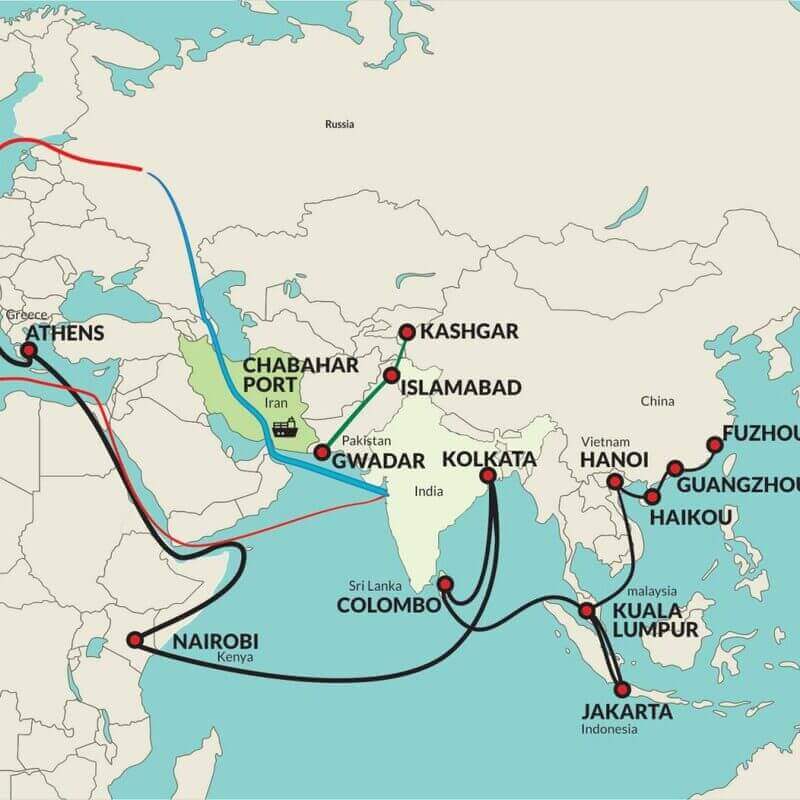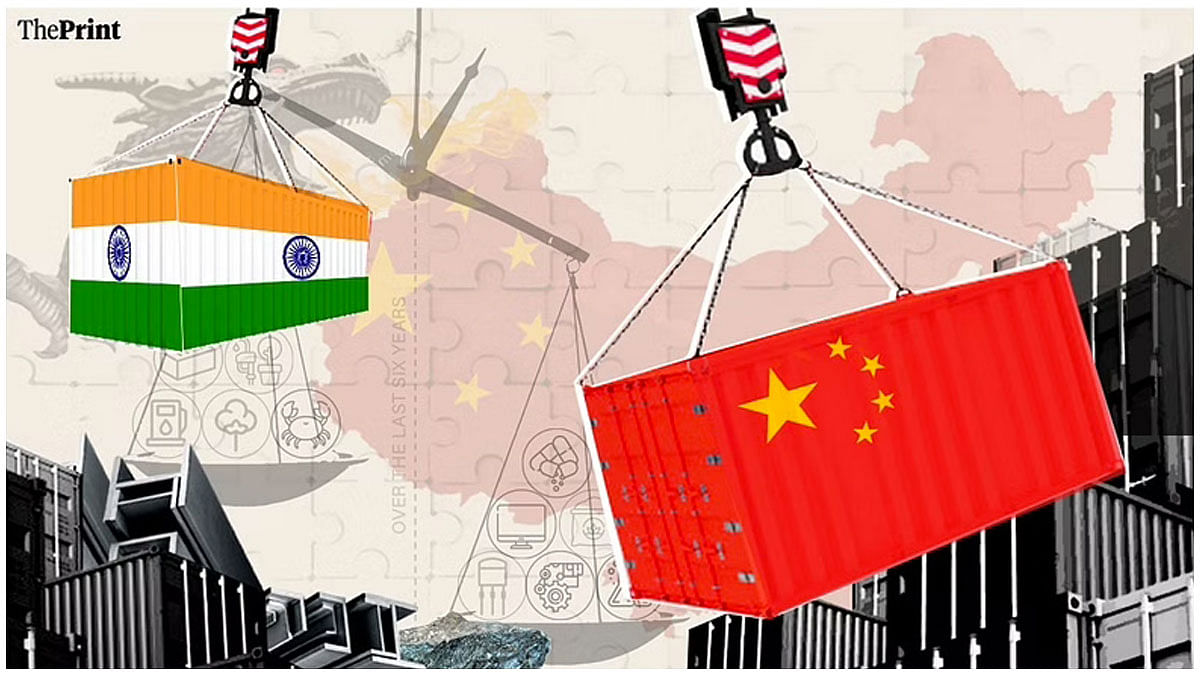Chabahar’s opportunities and challenges
India and Iran have recently concluded a deal to invest in and operate the Shahid-Behesti terminal at Chabahar Port for another 10 years

- This agreement strengthens the bilateral relations between the two countries and has significant implications for India’s strategic and economic interests in the region.
India’s Perspective on Chabahar
- Chabahar as an Extended Neighborhood: For India, Chabahar represents its thinking from the perspective of an extended neighborhood, rather than just part of its West Asia outlook. The port serves as a vital trade artery connecting India with Afghanistan and Central Asian countries, bypassing Pakistan
- International North-South Transport Corridor: Chabahar is a fulcrum of the International North-South Transport Corridor, which seamlessly links India with Central Asia and Russia. This alternative route allows India to bypass the port of Karachi and Gwadar in Pakistan
- Tuned into ‘New’ Realities of Afghanistan: Chabahar is astutely tuned into the ‘new’ realities of Afghanistan, providing India with a strategic advantage in the region.
- Importance for India-Iran Ties: The development of Chabahar is crucial for India-Iran ties. Without Chabahar, the bilateral relationship would look extremely dry.
Reflection of Diplomacy
- Deal Amidst Tensions: The latest iteration of the deal was signed not long after Israel and Iran exchanged missile fire, coming critically close to a full-scale conflict. This highlights India’s ability to navigate complex diplomatic situations and engage with multiple partners
- Adani Group’s Investment in Israel: India’s Adani Group has also invested in a large port project in Israel, buying Israel’s Haifa port on the Mediterranean Sea for $1.2 billion. This investment showcases India’s participation in new diplomatic and economic endeavors with the United States, Israel, and Arab partners.
- Integration and Alternatives to China-backed Projects: India’s relations with Iran and the development of Chabahar could bring a significant level of integration and provide alternatives to China-backed projects in the region
The Bigger Picture
- Avoiding Concentration of Interests: The port project at Chabahar should not be the singular major play in the bilateral relationship. Concentration of interests in one area can be volatile, and it is important for India to diversify its engagement with Iran
- Accommodative Approach on Sanctions: The United States must move towards being accommodative on sanctions against Chabahar to ensure the smooth development and operation of the port
In conclusion, the India-Iran deal on the Shahid-Behesti terminal at Chabahar Port for another 10 years reflects India’s extended neighborhood perspective, its strategic thinking, and its diplomatic efforts to engage with multiple partners. The development of Chabahar has significant implications for India’s connectivity, integration, and alternatives to China-backed projects in the region. However, it is important for India to avoid over-reliance on the port project and for the United States to be accommodative on sanctions to ensure its smooth operation.
India relies on China for most electronic and electrical goods
- China has regained its position as India’s top trading partner in FY24, marking the sixth time in the past decade that China has surpassed the United States in this regard.
- To be designated as a top trading partner, the total value of India’s exports to a country and imports from that country must exceed that of any other country.

China’s Trade with India
- China’s status as India’s top trading partner is primarily due to the significantly high volume of imports from China, overshadowing India’s relatively low volume of exports to China.
- Consequently, India’s trade deficit with China has been rapidly widening compared to other trading partners.
- In contrast, India has a trade surplus with the United States, exporting more to the U.S. than it imports.
- The trade balance, or the gap between imports and exports, has been widening in recent years.
Primary Trade with China
- The majority of items imported from China by India fall under the categories of electronics and electrical items.
- Between FY15 and FY24, India imported $75 billion worth of mobile phones, making it the largest component in the import basket.
- India not only purchases electrical and electronic items in bulk from China but also heavily relies on China as the main source for these items, with limited alternatives available.
Other Trade of India
- India faces a trade deficit with most of its major trade partners.
- Notably, the trade deficit with Russia has seen a significant increase in recent years, rising from $6.6 billion in FY22 to $57.2 billion in FY24.
- This increase is attributed to India importing oil at a discounted price from Russia following sanctions imposed by the West. Russia currently serves as India’s primary source of oil.
- India’s trade surplus with the Netherlands has also grown, which is connected to the sanctions on Russia.
Menstrual hygiene in Indian prisons
The Current Situation:
- Positive changes in menstrual hygiene management have been observed in India over the years.
- According to the National Family Health Survey (NFHS 2019-2020), about 8 out of 10 young women aged 15-24 years now use safe menstrual hygiene products.
- However, while urban areas and certain demographics have seen improvements, the menstrual hygiene needs of women in Indian prisons have been overlooked.

Menstrual Hygiene in Prisons:
- The National Crime Records Bureau reports that there are 23,772 women in Indian prisons, with 77% of them belonging to the reproductive age group (18-50 years) and experiencing regular menstruation.
- However, the availability and quality of sanitary napkins in prisons have been inconsistent and unsatisfactory.
- Despite recommendations outlined in the 2016 Model Prison Manual, many states have failed to implement necessary provisions.
- Overcrowding and poor socio-economic conditions further add to the struggle of accessing basic necessities like water, sanitary napkins, and detergent.
- Women also reported feeling discouraged from using unclean washrooms, leading to a higher incidence of urinary infections.
Policy Interventions:
- Efforts have been made by India, particularly through the Menstrual Hygiene Scheme, which distributes free or subsidized sanitary napkins to young women.
- In 2023, the ‘National Menstrual Hygiene Policy’ was formulated in recognition of menstruation as a natural process requiring more attention.
- Notably, the policy recognizes prisoners as a population with compromised access to menstrual hygiene facilities.
- However, the policy lacks a concrete action plan to enhance menstrual hygiene management in prisons and overlooks the Ministry of Home Affairs, a critical stakeholder in this issue.
The Way Forward and Recommendations:
- The Indian government must ensure that basic standards of menstrual hygiene are met for women in captivity.
- The uneven implementation of the 2016 Model Prison Manual across states requires immediate attention.
- Collaboration between public health authorities and prison administrators should be encouraged to develop a comprehensive strategy that prioritizes the health and dignity of women behind bars, ensuring access to adequate menstrual hygiene products and facilities.
- Research is urgently needed to understand the current state of menstrual hygiene within prison walls.
At extremely high strain rate, copper surprises with the strength of steel
Steel in Civilization:
- Transformational Discovery: The discovery of steel had a profound impact on human civilization.
- Malleability of Copper: Copper can be heated to a liquid state and molded into desired shapes.
- Shape Retention: Once cooled, the copper returns to its solid state, retaining the shape of the mold.
- Iron’s Unique Property: Iron replaced copper and tin during the Iron Age due to its ability to dissolve carbon.
- Steel Formation: Repeated heating and cooling of iron removes most of the dissolved carbon, resulting in the creation of steel, an iron-carbon alloy.
- Superior Hardness: Steel is harder than copper, tin, and even iron, making it a game-changer.
Deformation and Strain Rate:
- Advancements in Material Testing: Researchers achieved higher strain rates using state-of-the-art material-testing technologies.
- Understanding Strain: Strain measures how much a material deforms under stress, while strain rate measures the rate of change in strain.
- Enhanced Strength of Steel: Steel ingots require more stress to achieve the same level of strain compared to copper or iron.
Sources of Strength:
- Three Sources of Copper Strength: The copper in the researchers’ study exhibited three sources of strength: drag-strengthening, thermal strength, and athermal strength.
- Drag-Strengthening: Interactions between stressed material parts and vibrational energy in the atomic lattice contribute to drag-strengthening.
- Thermal Strength: The kinetic energy of atoms in the lattice helps suppress the effects of defects in the material, enhancing its strength.
- Athermal Strength: Barriers to dislocation, such as the interface between crystal structures, contribute to athermal strength.
Changes in Strength Inventory:
- Unexpected Findings: The study revealed a change in the material’s strength response at a strain rate of approximately 1 million/s.
- Dynamic Strength of Copper: Even at room temperature, the study found that the copper substrate exhibited four times more dynamic strength under a strain rate of 1 million/s, without any applied strain.






